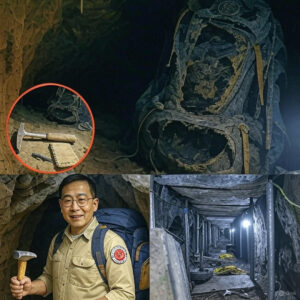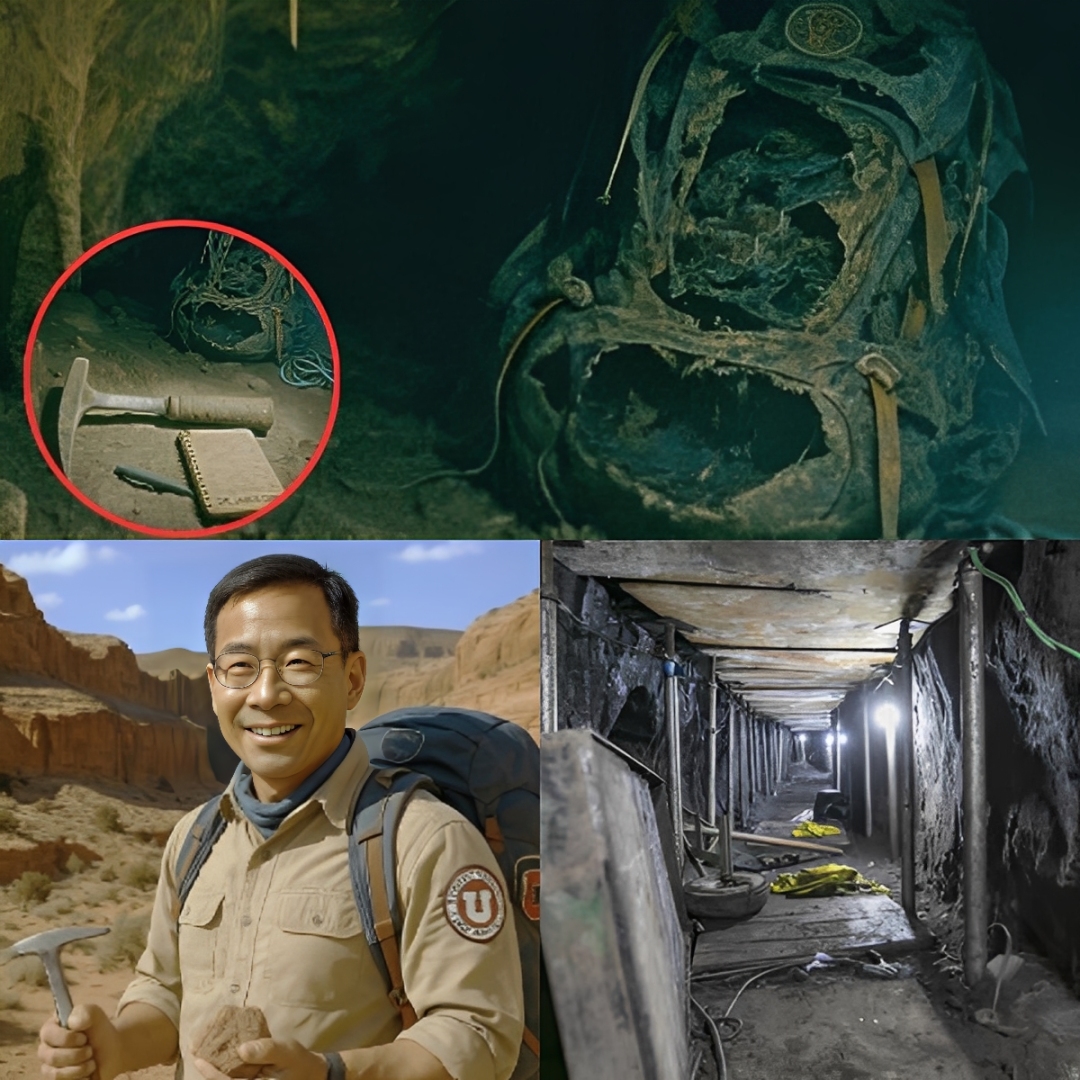In the vast silence of Mexico’s Copper Canyon, where the desert sun meets shadows a thousand feet deep, three hikers stumbled upon a discovery that would unearth one of the region’s most haunting mysteries — the fate of Dr. Javier Gomez, a geologist who vanished without a trace in 2012.

It began as an ordinary expedition. Mateo Salas, Sofia Herrera, and Diego Luna, seasoned hikers from Chihuahua City, were tracing an unmapped section of the canyon known locally as Las Venas del Cobre — “The Copper Veins.” What they found that day would bring an end to a twelve-year mystery and open a window into a man’s final hours of life.

A Wall That Didn’t Belong
“There was something off about the rocks,” Sofia told local authorities. “The color wasn’t right — almost like someone had painted over time itself.”
Behind a loose wall of stone, they noticed a narrow gap, just wide enough to slip a flashlight through. When Mateo aimed the beam inside, the light reflected off something metallic — a camera. Moments later, shapes began to emerge: a backpack, a scattering of notebooks, and the unmistakable outline of human remains.
Within hours, authorities from the Fiscalía General del Estado arrived at the scene. The chamber was partially collapsed, its interior sealed off by years of erosion and landslides. Inside, they found what forensic experts later confirmed to be the body of Dr. Javier Gomez, a respected geologist and explorer whose disappearance in 2012 had confounded both colleagues and family.

The Diary in the Dust
Amid the debris was a weathered camera and a small, sealed notebook — Gomez’s field journal. Remarkably preserved by the arid air, the diary chronicled his final 48 hours.
According to the entries, Gomez had been mapping copper deposits when a sudden rockfall trapped him inside a narrow fissure. His radio and satellite phone were destroyed. His notes suggest he remained conscious for nearly two days, writing by the light of a failing headlamp.
One passage reads:
“I can hear the stones shifting. The air is thin but still here. I think of the sky above — red at dusk, blue at dawn — and I wonder if the world remembers I’m still inside it.”
Another, dated just before the final page, reveals his grim acceptance:
“No one will find me here. But perhaps the earth will keep my notes safe. Maybe one day they’ll know I tried.”
A Scientist’s Final Legacy
Dr. Gomez, 42 at the time of his disappearance, was conducting independent geological research in the Sierra Tarahumara, studying mineral structures believed to predate the formation of the canyon itself. His last known contact was a brief radio transmission from August 3, 2012, reporting “unusual seismic activity” near his camp. Search teams combed the area for weeks but found no sign of him.
Experts reviewing the recovered diary say his final observations could offer new insights into the region’s geological behavior. “Even in his last hours, Gomez was thinking like a scientist,” said Dr. Lucia Morales, a geologist from UNAM. “His notes describe micro-fractures and ground vibrations consistent with recent studies. It’s tragic, but his data may still advance our understanding of the Copper Canyon’s evolution.”
A Resting Place in the Earth
Following the discovery, Dr. Gomez’s remains were respectfully removed and transported to Chihuahua City. His family, who had never given up hope, released a brief statement:
“After twelve years of silence, we finally have his voice again. He was doing what he loved — listening to the earth.”
Local authorities plan to preserve the site as a protected scientific and memorial location. For the hikers who found him, the experience remains surreal. “It felt like time had been paused,” Mateo said quietly. “Like the mountain had been holding him, waiting for someone to come.”
As the sun set over the Copper Canyon that evening, the same rocks that had entombed a man for over a decade glowed with the light he once studied. His story — one of solitude, science, and perseverance — now sealed not by stone, but by remembrance.
Leave a Reply